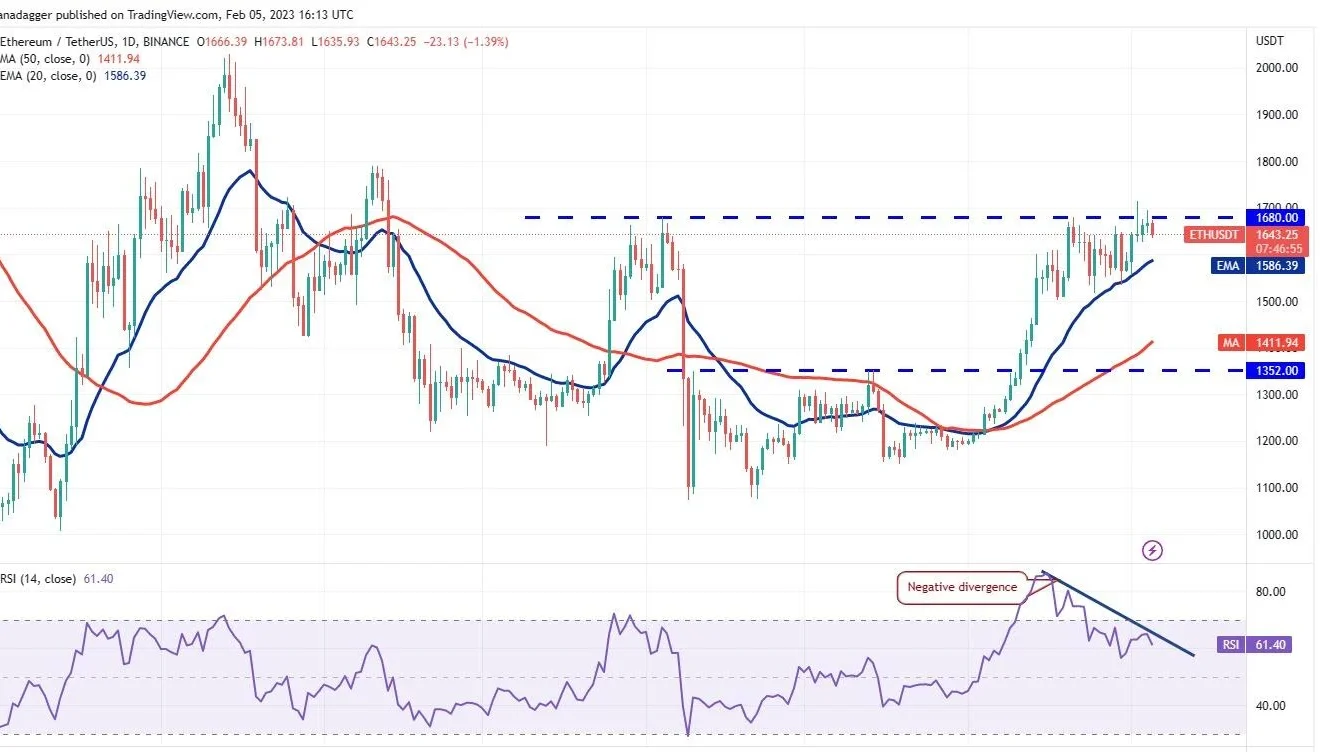Best Ethereum Futures Trading Strategies for 2025 Complete Guide

The cryptocurrency derivatives market has exploded in recent years, with Ethereum futures becoming one of the most traded digital assets. Mastering ethereum futures trading strategies is essential for traders looking to capitalize on ETH’s price movements while managing risk effectively. Whether you’re a beginner exploring crypto derivatives or an experienced trader seeking to refine your approach, understanding the nuances of Ethereum futures can significantly impact your trading success.
Ethereum futures contracts allow traders to speculate on the future price of ETH without directly owning the underlying asset. These derivative instruments provide opportunities for both profit and hedging, making them attractive to institutional investors and retail traders alike. The key to success lies in developing robust ethereum futures trading strategies that account for market volatility, leverage risks, and the unique characteristics of the cryptocurrency market.
Understanding Ethereum Futures Trading Fundamentals
Before diving into specific strategies, it’s crucial to understand what Ethereum futures are and how they differ from spot trading. Ethereum futures are standardized contracts that obligate buyers and sellers to transact ETH at a predetermined price on a specific future date. These contracts are traded on various cryptocurrency exchanges and regulated financial platforms.
The primary advantage of futures trading is the ability to use leverage, which allows traders to control larger positions with smaller amounts of capital. However, this amplification works both ways – profits and losses are magnified proportionally. Understanding this fundamental principle is essential for developing effective trading strategies.
Market participants use Ethereum futures for various purposes, including speculation, hedging existing positions, and arbitrage opportunities. Institutional investors often use these instruments to gain exposure to Ethereum without the complexities of direct cryptocurrency custody. Retail traders, on the other hand, frequently employ futures for short-term speculation and portfolio diversification.
Essential Ethereum Futures Trading Strategies
Trend Following Strategy
Trend following is one of the most popular approaches among cryptocurrency traders. This strategy involves identifying the dominant market direction and positioning trades to profit from continued price momentum. For Ethereum futures, trend following can be particularly effective due to the cryptocurrency’s tendency to experience sustained directional movements.
Successful trend following requires identifying key support and resistance levels, monitoring volume patterns, and using technical indicators such as moving averages and the Relative Strength Index (RSI). When implementing this strategy, traders typically enter long positions during uptrends and short positions during downtrends, always with appropriate risk management measures in place.
The key to successful trend following lies in patience and discipline. Markets don’t move in straight lines, and temporary reversals are normal even within strong trends. Traders must be prepared to weather short-term volatility while maintaining their positions based on the overall market direction.
Mean Reversion Strategy
Mean reversion strategies operate on the principle that prices tend to return to their average levels after extreme movements. In the context of Ethereum futures, this approach involves identifying overbought or oversold conditions and positioning trades to profit from price corrections.
This strategy works particularly well in ranging markets where Ethereum’s price oscillates between established support and resistance levels. Traders using mean reversion techniques often rely on oscillating indicators like the Stochastic Oscillator or Bollinger Bands to identify entry and exit points.
Risk management is crucial when implementing mean reversion strategies, as markets can remain in extreme conditions longer than anticipated. Successful practitioners typically use smaller position sizes and wider stop-losses to account for potential false signals and extended price movements beyond normal ranges.
Arbitrage Opportunities
Arbitrage strategies involve exploiting price differences between different markets or instruments. In Ethereum futures trading, several arbitrage opportunities exist, including calendar spreads, basis trading, and cross-exchange arbitrage.
Calendar spreads involve simultaneously buying and selling futures contracts with different expiration dates, profiting from changes in the price relationship between near-term and longer-term contracts. This strategy can be particularly profitable during periods of high volatility or when market sentiment shifts significantly.
Basis trading focuses on the price difference between spot Ethereum and futures contracts. When futures trade at a premium to spot prices (contango), traders can profit by selling futures and buying spot ETH, capturing the convergence as contracts approach expiration.
Advanced Technical Analysis for ETH Futures
Chart Pattern Recognition
Technical analysis plays a crucial role in developing effective ethereum futures trading strategies. Chart patterns provide valuable insights into market psychology and potential future price movements. Common patterns in Ethereum futures include head and shoulders formations, triangles, flags, and double tops or bottoms.
Understanding these patterns requires studying historical price action and volume data. Successful pattern recognition involves identifying key levels where institutional and retail traders are likely to enter or exit positions. This knowledge helps traders position themselves advantageously relative to larger market participants.
Volume analysis is equally important when interpreting chart patterns. High volume during breakouts confirms pattern validity, while low volume may indicate false signals. Combining pattern recognition with volume analysis significantly improves the accuracy of trading signals.
Momentum Indicators and Oscillators
Momentum indicators help traders gauge the strength and sustainability of price movements. Popular indicators for Ethereum futures include the Moving Average Convergence Divergence (MACD), RSI, and the Commodity Channel Index (CCI).
The MACD is particularly useful for identifying trend changes and generating buy or sell signals. When the MACD line crosses above the signal line, it often indicates bullish momentum, while crosses below suggest bearish conditions. However, traders should always confirm MACD signals with additional technical analysis tools.
Oscillators like RSI help identify overbought and oversold conditions. RSI readings above 70 typically suggest overbought conditions, while readings below 30 indicate oversold scenarios. These levels can provide valuable entry and exit points for contrarian trading strategies.
Risk Management in Ethereum Futures Trading

Position Sizing and Leverage Management
Proper position sizing is fundamental to long-term trading success. Given the high volatility of Ethereum and the leverage available in futures trading, determining appropriate position sizes requires careful consideration of account size, risk tolerance, and market conditions.
A general rule is to risk no more than 1-3% of total account capital on any single trade. This conservative approach helps preserve capital during inevitable losing streaks and allows traders to remain in the game long enough for their strategies to prove profitable.
Leverage management is equally critical. While high leverage can amplify profits, it also increases the potential for significant losses. New traders should start with lower leverage ratios and gradually increase exposure as they gain experience and confidence in their trading abilities.
Stop Loss Strategies
Effective stop-loss placement is crucial for controlling downside risk in futures trading. Different market conditions and trading strategies require different stop-loss approaches. Technical stops based on support and resistance levels work well for trend-following strategies, while percentage-based stops may be more appropriate for short-term scalping approaches.
Trailing stops can be particularly effective in trending markets, allowing traders to lock in profits while maintaining exposure to continued favorable price movements. However, trailing stops require careful calibration to avoid being stopped out by normal market noise.
Hedging Techniques
Hedging involves taking offsetting positions to reduce overall portfolio risk. For Ethereum holders, futures contracts provide an excellent hedging vehicle. By selling futures contracts against spot ETH holdings, investors can protect against downside price movements while maintaining upside exposure.
Dynamic hedging strategies adjust hedge ratios based on changing market conditions and portfolio characteristics. These sophisticated approaches require constant monitoring but can provide superior risk-adjusted returns for active traders and institutional investors.
Market Analysis and News Impact on Ethereum Futures

Fundamental Analysis Factors
Ethereum’s price is influenced by numerous fundamental factors that traders must consider when developing trading strategies. Network upgrades, regulatory developments, institutional adoption, and competitive dynamics all impact ETH valuations and, consequently, futures prices.
The transition to Ethereum 2.0 and the implementation of proof-of-stake consensus represent significant fundamental catalysts. These developments affect network security, transaction throughput, and energy consumption – all factors that influence long-term Ethereum adoption and price appreciation.
Regulatory clarity is another crucial factor. Positive regulatory developments typically boost Ethereum prices, while regulatory uncertainty or adverse rulings can trigger significant sell-offs. Staying informed about regulatory developments in major markets is essential for futures traders.
Economic Indicators and Market Sentiment
Broader economic conditions significantly impact cryptocurrency markets, including Ethereum futures. Traditional economic indicators such as inflation rates, interest rate decisions, and employment data can influence crypto market sentiment and capital flows.
Market sentiment analysis involves monitoring social media trends, news sentiment, and trader positioning data. Tools like the Fear and Greed Index provide quantitative measures of market sentiment that can inform trading decisions and risk management approaches.
Understanding the relationship between traditional financial markets and cryptocurrencies is increasingly important as digital assets become more mainstream. Correlations with stock indices, commodities, and currency markets can provide valuable insights for developing trading strategies.
Platform Selection and Execution Strategies
Choosing the Right Trading Platform
Selecting an appropriate trading platform is crucial for implementing ethereum futures trading strategies effectively. Key considerations include trading fees, available leverage, order types, platform stability, and regulatory compliance.
Major cryptocurrency exchanges like Binance, Bybit, and FTX offer Ethereum futures with varying features and fee structures. Regulated platforms such as CME and Bakkt provide institutional-grade infrastructure but may have higher capital requirements and more restrictive trading terms.
Platform reliability becomes critical during high volatility periods when rapid execution is essential. Traders should test platforms during different market conditions and have backup options available to avoid missing trading opportunities due to technical issues.
Order Types and Execution Tactics
Understanding different order types and their appropriate applications is essential for effective futures trading. Market orders provide immediate execution but may suffer from slippage during volatile periods. Limit orders offer price control but risk missing opportunities if markets move quickly.
Advanced order types like stop-limit orders, trailing stops, and conditional orders provide additional flexibility for implementing complex trading strategies. These tools allow traders to automate certain aspects of their trading while maintaining control over risk management parameters.
Execution timing can significantly impact trading results. Understanding market microstructure, including typical volume patterns and volatility cycles, helps traders optimize entry and exit timing for better fill prices and reduced market impact.
Performance Optimization and Strategy Backtesting
Historical Performance Analysis
Backtesting trading strategies using historical Ethereum data provides valuable insights into strategy effectiveness and potential drawbacks. Comprehensive backtesting should include various market conditions, including bull markets, bear markets, and sideways trading periods.
Key metrics for evaluating strategy performance include total return, maximum drawdown, Sharpe ratio, and win rate. These metrics help traders understand not just profitability but also risk-adjusted returns and the consistency of strategy performance.
It’s important to account for transaction costs, slippage, and funding rates when backtesting futures strategies. These factors can significantly impact real-world performance and should be incorporated into any meaningful strategy evaluation.
Continuous Strategy Refinement
Successful traders continuously refine and adapt their strategies based on changing market conditions and performance feedback. This process involves regular strategy review, parameter optimization, and adaptation to new market dynamics. Market conditions evolve, and strategies that worked well in the past may become less effective as markets mature and trading patterns change.
Staying flexible and open to strategy modifications is essential for long-term trading success. Documentation and record-keeping play crucial roles in strategy refinement. Maintaining detailed trading logs helps identify patterns in winning and losing trades, enabling data-driven improvements to trading approaches.
Common Pitfalls and How to Avoid Them
Emotional Trading Mistakes
Emotional decision-making is one of the biggest obstacles to successful futures trading. Fear and greed often lead traders to abandon well-designed strategies at the worst possible times, typically resulting in significant losses. Developing emotional discipline requires creating and following a detailed trading plan that specifies entry and exit criteria, position sizing rules, and risk management parameters.
Having predetermined rules helps remove emotions from trading decisions and improves consistency. Using position sizing that allows for comfortable sleep is another important factor. If position sizes are causing significant stress or anxiety, they’re likely too large relative to account size and risk tolerance.
Overleverage and Risk Management Failures
Excessive leverage is a common cause of account failures in futures trading. The attraction of potentially large profits often leads traders to use leverage levels that make long-term success unlikely. Proper risk management involves not just position sizing but also diversification across different strategies and time horizons.
Concentrating too much capital in a single strategy or market condition increases portfolio risk unnecessarily. Regular risk assessment and adjustment are essential components of effective risk management. Market conditions change, and risk management parameters should be adjusted accordingly to maintain appropriate risk levels.
Also Read: Complete Ethereum Investment Strategy 2025 Expert Guide to Maximize Returns
Conclusion
Developing profitable ethereum futures trading strategies requires a combination of technical knowledge, risk management discipline, and continuous learning. The cryptocurrency derivatives market offers significant opportunities for traders who approach it with proper preparation and realistic expectations.
Success in Ethereum futures trading isn’t about finding a perfect strategy that works in all market conditions. Instead, it’s about developing a robust framework that includes multiple strategies, effective risk management, and the flexibility to adapt to changing market dynamics. The strategies outlined in this guide provide a solid foundation, but individual traders must adapt these concepts to their specific risk tolerance, capital base, and trading objectives.
The key to long-term success lies in treating futures trading as a business rather than gambling. This means maintaining detailed records, continuously analyzing performance, and making data-driven decisions rather than emotional ones. By combining technical analysis, fundamental research, and sound risk management principles, traders can develop ethereum futures trading strategies that generate consistent profits over time.




